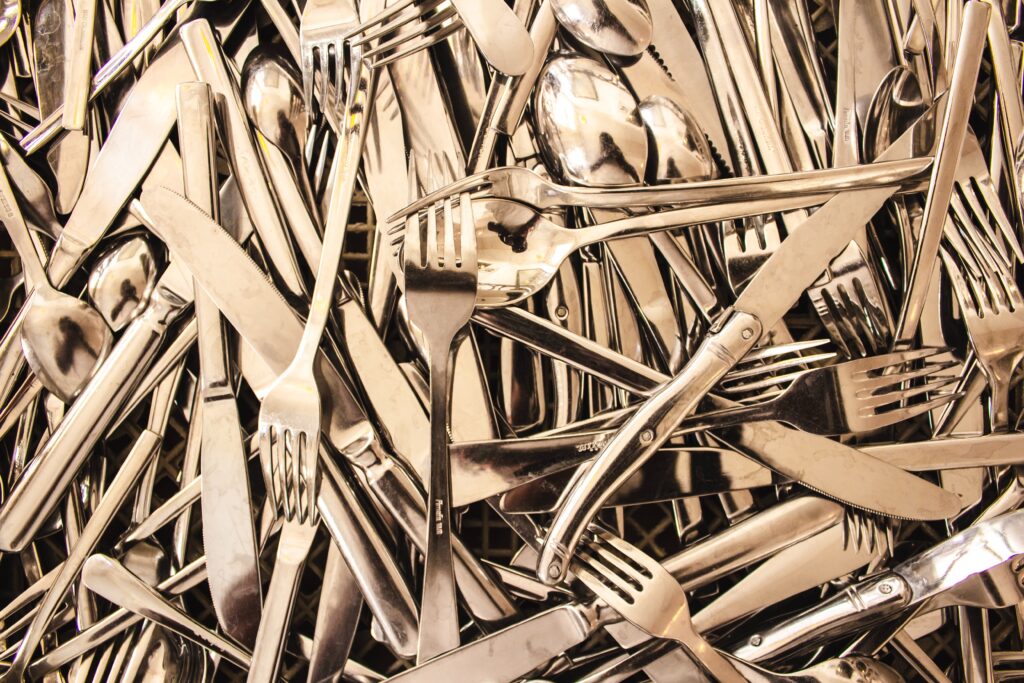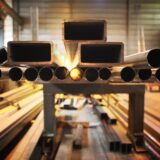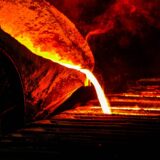
When specialty Steels Evolved, So did buildings and Automobiles.
“Special steel making the world more advanced”
Steel is made by mixing iron with less than 2% carbon, and special steels are made by further mixing various metallic elements .
Those who are not familiar with metals may wonder, “What is special about special steel?” In fact, it is not easy for even metal experts to explain its special characteristics. This is because it is a mixture of special circumstances.
Therefore, in this article, the author, who has 13 years of experience in procuring metal parts and materials for Toyota Motor Corporation and startup companies, will introduce the following with my experiences.we will try to get to the essence of special steel by unraveling its intricacies.
To present our conclusions first, the special nature of special steel helps to make buildings, automobiles, and tools more sophisticated. Without special steel, buildings, automobiles, and tools would not have the performance they have today.
Special steel is so highly functional that once a manufacturing company makes a product using special steel, it should no longer be possible to return to ordinary iron or ordinary steel.
For example, stainless steel, which is said to be a rust-free iron, is also a special steel, but if the materials for spoons and forks were changed back from stainless steel to ordinary iron, they would require daily rust removal.
In this sense, iron that is not special steel may now be considered more “special”.
Here is the definition of special steel.
The definition of special steels contain the following two conditions.
●Higher performance and quality than ordinary iron (steel).
●Special steel is steel that has been given special properties by adding one or several metallic elements to iron (steel).
It is no surprise that special steels have high performance and high quality. This is because special steels have been developed to give high performance to steel.
To achieve high performance, metallic elements are added, and the key points here are “one or several” and “special properties.
Manufacturing companies require hard or soft steel, strong or weak steel. To meet these advanced needs, special steels are mixed with various metallic elements to create special properties.
Special steels are also required to be of high quality.
End users such as manufacturers use special steels to make their products that cannot be made with ordinary steel.
Therefore, end users demand not only functionality and certain chemical composition, but also high quality. The quality of special steel tends to be higher than that of ordinary steel. However, this does not mean that ordinary steel is of low quality. We can say that “ordinary steel also has considerably high quality control, but the quality control of special steel is more rigorous.
If steel meets the above two conditions, it is called special steel, but then there would be countless types of special steel.
So, currently, special steels are classified into three categories: (1) structural steel, (2) tool steel, and (3) special-purpose steel. It seems that (3) can be called “even more special specialty steel” which is neither (1) nor (2).
Special steels belonging to these three categories are as follows,
| Type | Examples |
| Structural steel | Carbon steel for machine structural use, Alloy steel for machine structural use, etc |
| Tool steel | Alloy Tool Steel, High-speed Tool Steel, Carbon Tool Steel, Hollow Steel, etc |
| Special purpose steel | Spring steel Bearing steel Heat-resistant steel Stainless steel Free-cutting steel Piano wire rod High tensile strength steel High manganese steel Super heat-resistant steel alloy Others |
We can say that we have a good understanding of special steels if we know (1) structural steels, (2) tool steels, and (3) special purpose steels, so we will introduce them one by one.
Structural steel is used in civil engineering, construction, bridges, vehicles, machinery, and equipment. It is called structural steel because it is steel used in the structure of these objects.
The reason why buildings, bridges, automobiles, etc. have structures is so that they do not lose their shape no matter how strong a force is applied to them. If the shapes of buildings, bridges, automobiles, etc. collapse at the slightest moment, they are not only useless, but also endanger people’s lives.
Therefore, the most important “specialness” and “special property” of structural steel is strength.
Among structural steels, we explain more in detail about carbon steels & alloy steel for machine structural use.
The metallic elements in these steels include nickel, chromium, and molybdenum. By selecting the type and amount of metallic elements to be mixed, strength, fatigue resistance, toughness, and hardenability are adjusted.
Toughness refers to tenacity, and hardenability refers to ease of heat treatment.
Carbon steels for machine structural use are the most common steels, and their hardness is adjusted by the amount of carbon and heat treatment.
Alloy steels for machine structural use are mixed with metallic elements other than carbon.
We will explain further about structual steel.
For example, one of the alloy steels for machine structural use is “high-strength, high cold-forging case-hardening steel,” which was successfully made stronger by mixing titanium and boron.
Increased strength allows steel to be lighter.
If a manufacturer uses high-strength, highly cold-formed steel to make a product, the product will be lighter because the same strength can be achieved with a smaller amount of steel. In addition, manufacturers can reduce manufacturing costs because high-strength, cold-forging case-hardening steel maintains its strength even with fewer machining steps.
The word “tool” may remind you of DIY tools sold at home centers, but the tools here are for industrial use.
Tool steel is used for cutting tools such as drills, circular saws, and edge files, as well as for molds used to make metal and plastic products. An introduction to our tool steels can be found here.
Tool steel was developed separately from structural steel because its needs are very different.
Tool steel is often used where friction and heat are applied, so high wear resistance and high heat resistance are required. To provide these properties, silicon, manganese, phosphorus, sulfur, chromium, tungsten, vanadium, and molybdenum are added to tool steel.
Among tool steels, alloy tool steels have the properties of impact resistance and undeformability in addition to wear and heat resistance. Chromium, tungsten, and vanadium are used for this purpose.
Machining alloy tool steels is not easy because tools are required to be hard. For this reason, alloy tool steel is only used to make special tools.
More specialized than alloy tool steels is high-speed tool steel, which is used for parts that rotate at high speeds to cut metal. The English name of high-speed tool steel is sometimes abbreviated as HSS.
A high-speed tool steel with higher wear resistance and toughness is called a powdered HSS. Since it is made by applying pressure and heat to a powdered material (metal), the manufacturing cost is higher, but in return, tools made from powder HSS steel have a longer service life. It is like making ultra-high quality steel with a lot of time and effort.
If the performance is not as high as that of powdered HSS, then melting HSS, which is made by melting the material (metal) in an electric furnace, is used. Although HSS is also an expensive steel, it can be made at a lower cost than powdered HSS.
As needs become more specific, neither structural steel nor tool steel can meet them, and special-purpose steel becomes necessary. Special purpose steel is used in such a way that they can only be used here.
This section introduces the characteristics and applications of spring steel and bearing steel as special-purpose steel examples.
Spring steels is used in automotive leaf springs and watch springs. These products are required to have the property of springiness. Springiness is the property of deforming when a force is applied and returning to its original shape when the force is removed.
The two points are (1) it must deform and (2) it must return to its original shape.
These two characteristics are actually something that iron is not very “good at,” but also something that it “cannot afford not to have.
For example, if the metal used for spoons had the property of deformation, it would be useless. If the metal used for the body of an automobile had the ability to return to its original shape, the body would not be able to maintain its shape.
In other words, in most cases, steel is used because it is not deformable and does not return to its original shape.
However, in the case of leaf springs and springs, if they are not deformed, they snap when force is applied, and if they do not return to their original shape, they are useless because no restoring force is generated.
For this reason, a very specialized iron called spring steel was developed. Spring steel is made of silicon, manganese, chromium, vanadium, etc.
Few parts are as common around us as “shafts,” even though we rarely see them. Shafts are used in automobiles, refrigerators, smartphones, chairs, safes, and wind turbines. A shaft is defined as a mechanical element (part) that transmits power or supports a rotating body.
And one of the shafts, called a bearing, is the component that allows the part to rotate but remain in place.
Objects usually move when they rotate. If you spin a ball on the ground, it will move. However, a car tire, a safe door, or a wind turbine must stay in place while rotating. Moreover, tires, doors, and wind turbines must rotate smoothly.
Furthermore, they must continue to rotate smoothly over a long period of time, and they must continue to rotate smoothly even when strong forces are applied to them.
Therefore, bearing steel requires a special property called “rolling fatigue strength. This is why a very specialized iron called bearing steel was developed.
The high performance of specialty steels is the result of the metallic elements that are added. We have introduced some of the metallic elements in the previous explanations, but here are their properties again
Manganese (Mn): related to strength, hardness
Nickel (Ni): related to tenacity, strength, heat
Chromium (Cr): wear, rust-related
Molybdenum (Mo): heat, hardness-related
Vanadium (V): heat, strength, hardness, wear
Titanium (Ti): related to hardness, rust
Bismuth (Bi): Related to machinability
Tungsten (W): heat, strength, hardness
The unit price of special steel is higher than that of ordinary steel, because it costs more to produce the special properties. This is also because the metallic elements added to give special properties are expensive.
However, high and low prices are relative, and special steel can be considered “inexpensive for its high performance. Thanks to the low cost of special steels, our cities are filled with automobiles, buildings, tools, and so on.
The reason why the price of special steel is kept low (relatively speaking) is that special steel can be made from steel scrap. The base of special steel is iron, but it is not made from iron ore, but from scrap iron taken from scrapped cars and demolished buildings.
A large amount of scrap iron is melted down and a small amount of various metallic elements are added to it to make special steel.
The world’s first special steel is said to have been a spring steel made by an English watchmaker in 1740.
The special steel became popular in the mid-19th century when the Bessemer process, a new method for mass-producing steel, was invented in the UK. This allowed for the production of steel on a much larger scale, and led to the development of new alloys and manufacturing techniques to meet the growing demand for specialized steel products.
During the 20th century, advancements in materials science and manufacturing technologies enabled the production of even more specialized types of steel, such as stainless steel, tool steel, and high-speed steel. These materials played a critical role in the development of numerous industries, including aviation, automotive, and construction.
Meanwhile, modern Japanese steel manufacturing is said to have begun with the government-run Yawata Steel Works, established in 1901. The technology used here was imported from Germany.
For a while after that, Japan was able to produce ordinary iron, but not special steel, and had to rely on imports. However, with the outbreak of World War I (1914 – 1918), Europe needed large quantities of special steel and could no longer afford to send it to Japan. This is how Japanese steel industry started developing special steel. After 100 years, with so much effort, Japanese special steel has become one of the industrial leaders.
Today, special steel continues to be a vital component of many modern technologies, and research and development efforts are ongoing to create even more advanced and specialized types of steel to meet the demands of tomorrow’s industries.
Specialty steels are not finished and are still evolving.
Ovako, a Swedish specialty steel manufacturer that Nippon Steel made a wholly owned subsidiary in 2018, is actively working to make its production carbon neutral.
An indicator of the degree of carbon neutrality is the carbon footprint. The carbon footprint is the amount of greenhouse gas emissions throughout a product’s life cycle, from raw material procurement to manufacturing, sales, and disposal, converted to CO The carbon footprint of Ovako’s specialty steels is 80% less than the global average for steel products.
Magnets are another specialty steel. The strongest magnet in the world is a neodymium magnet, which has a magnetic force of 1 g that can lift 1 kg of steel. Neodymium magnets are also used in smartphones.
Japan leads other countries in the research and development of neodymium magnets, and Mr. Masato Sagawa, a leading expert in this field, is considered a strong candidate for the Nobel Prize.
Here is a bulleted summary of the article.
●Specialty steel is a familiar iron used in automobiles, buildings, and wind power generation
●The two main characteristics of special steel are “high performance and high quality” and “carbon plus metallic elements.
●There are three types of specialty steel: structural steel, tool steel, and special-purpose steel.
●The specialty steel is often made from steel scrap, which is eco-friendly.
●The history of special steel in Japan is more than 110 years, but some inventions are considered Nobel Prize class.
Specialty steels have extremely special performance, yet they are commonplace steel that supports industry, infrastructure, and daily life around the world.
Enserve’s main product is special steel. We work to build supply chains for your desired steel grade and shape across the world. If you have any inquiries or problems about special steel, please feel free to consult us.


